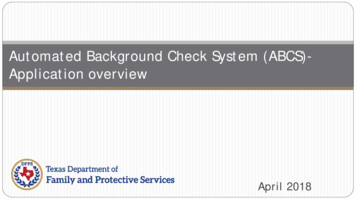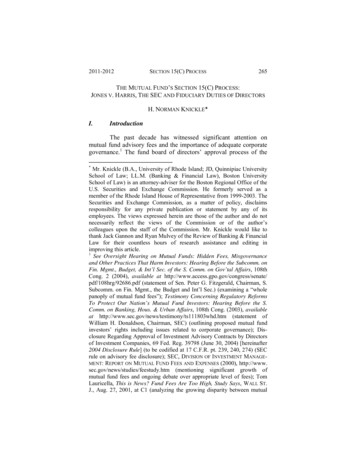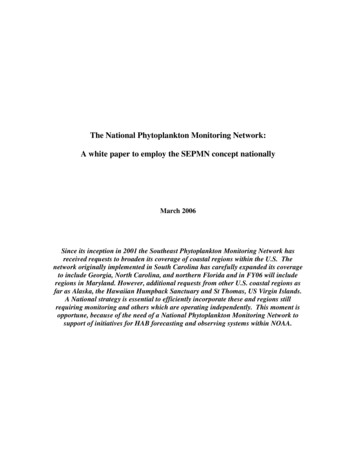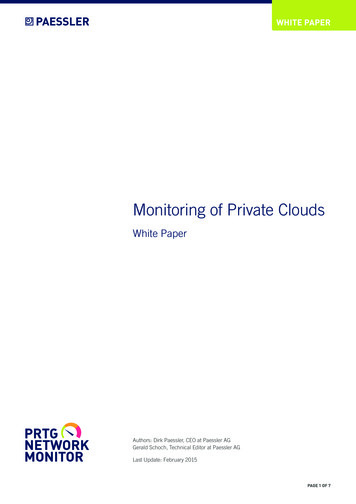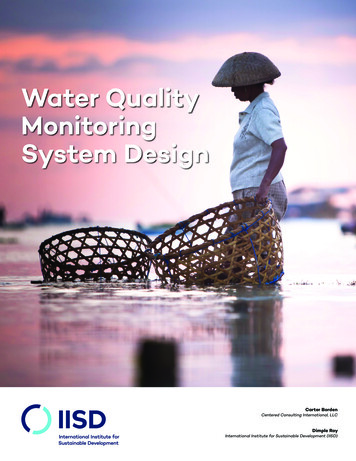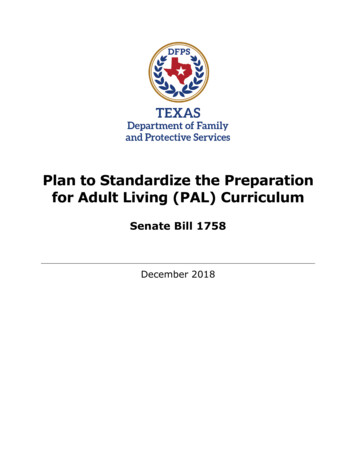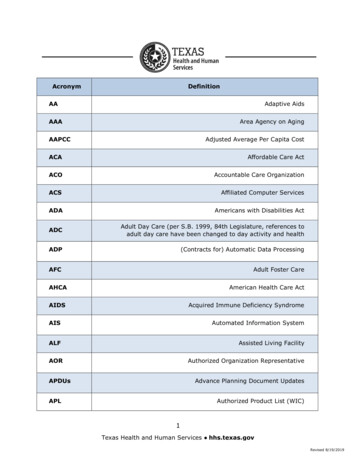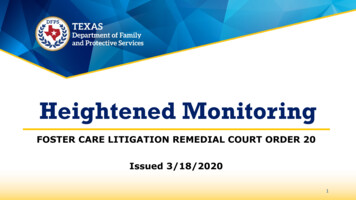
Transcription
Heightened MonitoringFOSTER CARE LITIGATION REMEDIAL COURT ORDER 20Issued 3/18/20201
Remedial Court Order 20 – HeightenedMonitoring (2of 13)Following consultation with HHSC and DFPS involvingwritten and verbal feedback, the Monitors have ordered thefollowing framework for implementation of Remedial Order20:2
Remedial Court Order 20 – HeightenedMonitoring ((3of 13) 1of 13)PATTERN:“A pattern is defined as a high rate of contract and standardsviolations for at least three of the last five years.”3
Remedial Court Order 20 – HeightenedMonitoring (4of 13)Steps in identifying the pattern:1. Each agency (HHSC and DFPS) shall review data for the rate of contract and standardsviolations, including confirmed findings of abuse and neglect, for the last five years. Therate is calculated using the number of violations divided by the operation's capacitymultiplied by 10 (Number of contract or standards violations/capacity X 10).o Data is from calendar years 2015-2019. Pattern will be run annually, adding calendaryear 2020 and dropping off calendar year 2015. Data for 2016-2020 will be re-run.2. For each of the last five years, compare the operation’s rate of violations to the combinedrate of violations for all operations of similar size (small, medium, or large) and servicetype (basic general residential operation, residential treatment center, child placingagency, and independent foster family and group homes).o Numerator is number of violations during the year and denominator is licensedcapacity for a GRO and active homes for a CPA3. If the operation’s rate of violations rated medium, medium-high, or high is above thecombined rate of violations rated medium, medium-high, or high for operations of similarsize and service type for three of the last five years, then there is a pattern of violations.4. Each agency shall inform the other of all operations identified as having a pattern ofdeficiencies.4
Remedial Court Order 20 – HeightenedMonitoring (5of 13)Operation Size:Small operations: Those with a capacity of 20 or fewer children or, for CPAs, 20or fewer open foster homes;Medium operations: Those with a capacity of 21-50 children or 21- 50 openfoster homes; andLarge operations: Those with a capacity of more than 50 children or more than50 open foster homes.Operation Service Type:Basic General Residential Operation (includes Emergency Shelters and ChildCare )General Residential Operation – Residential Treatment CenterChild Placing AgencyIndependent Foster Family and Group Homes (not included as DFPS no longercontracts with these types of homes)5
Remedial Court Order 20 – HeightenedMonitoring (6of 13)HEIGHTENED MONITORING6
Remedial Court Order 20 – HeightenedMonitoring (7of 13)Facility Intervention Team Staffing (FITS)When an operation is identified for heightened monitoring, FITS is scheduledwithin 5 days. The intervention team is made up of staff from, at least, RCCL,DFPS CCI, DFPS Contracts, and CPS.During the FITS, the team will review: Any trends for the operation identified as a result of the 5-yearretrospective analysis. Any monitoring plans or corrective or enforcement actions for the operationin the last 5 years; Any risk analyses conducted by RCCL or DFPS for the operation in thelast 5 years.7
Remedial Court Order 20 – HeightenedMonitoring (8of 13)FITS cont.:If the review reveals events that implicate an ongoing concern for the health andsafety of children, the intervention team will develop a safety plan and temporarilysuspend placements until all concerns for children’s health and safety have beenaddressed.8
Remedial Court Order 20 – HeightenedMonitoring (9of 13)HEIGHTENED MONITORING PLAN:The FITS team is responsible for developing a heightened monitoring plan that:1. Outlines a coordinated response from RCCL & DFPS, including a list of stafffrom both agencies who will serve on the heightened monitoring team for theoperation;2. Describes a detailed and specific plan addressing: The pattern of policy violations that led to heightened monitoring; Any barriers to compliance identified during a review of previouscorrective or enforcement actions or risk analyses; Any technical assistance needed by the operation from DFPS, RCCL, or athird party; The steps the operation must take to satisfy the plan.9
Remedial Court Order 20 – HeightenedMonitoring (10 of 13)While an operation is on heightened monitoring: RCCL and DFPS will share responsibility for at least weekly unannouncedvisits to the operation, and any placements of PMC children must be directly approved by theAssociate Commissioner of CPS. Caseworkers for PMC children in operations under heightened monitoringmust be made aware of the monitoring.10
Remedial Court Order 20 – HeightenedMonitoring (11of 13)HEIGHTENED MONITORING PLAN DURATION:The heightened monitoring plan will remain in place for at least one year, anduntil: the operation satisfies the conditions of the plan; at least six months’ successive unannounced visits indicate the operationis in compliance with the standards and contract requirements that led toheightened monitoring; and the operation is not out of compliance on any medium-high or highweighted licensing standards.11
Remedial Court Order 20 – HeightenedMonitoring (12of 13)After the operation is released from the plan: DFPS and RCCL will coordinate to make at least three unannouncedvisits in the three months following the release from the plan, and the heightened monitoring team will continue to track intake data for theoperation for six months to ensure it does not lose progress made duringmonitoring.If the operation does not come into compliance with the plan during theheightened monitoring period, DFPS and RCCL will identify one or more of thefollowing penalties: suspension of placements; imposition of fines; suspension or revocation of the facility or CPA’s license; termination of the contract.12
Remedial Court Order 20 – HeightenedMonitoring (13of 13)Questions?13
Monitoring (10 of 13) While an operation is on heightened monitoring: RCCL and DFPS will share responsibility for at least weekly unannounced visits to the operation, and any placements of PMC children must be directly approved by the Associate Commissioner of CPS. Caseworkers for PMC children in operations under heightened monitoring
